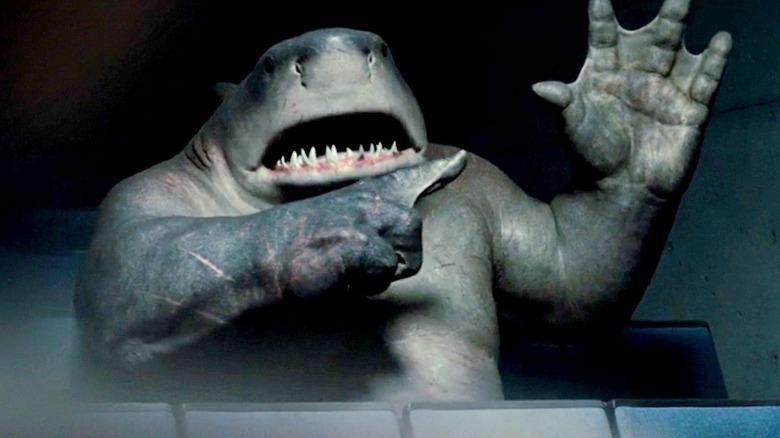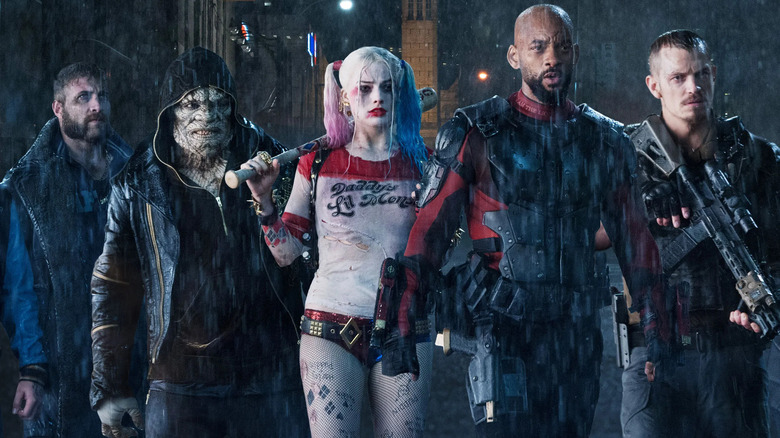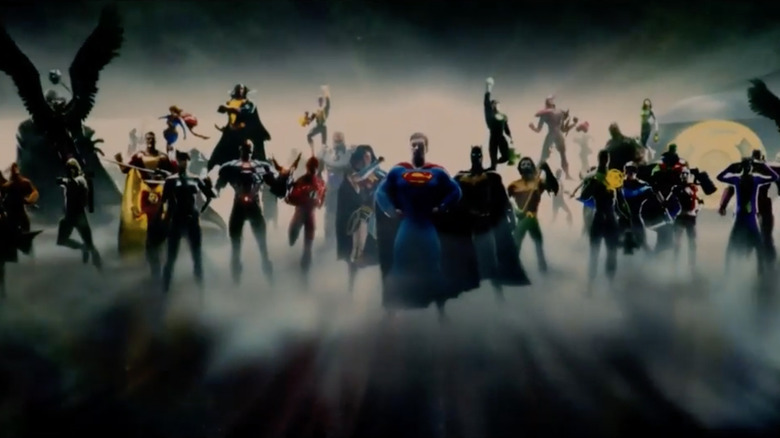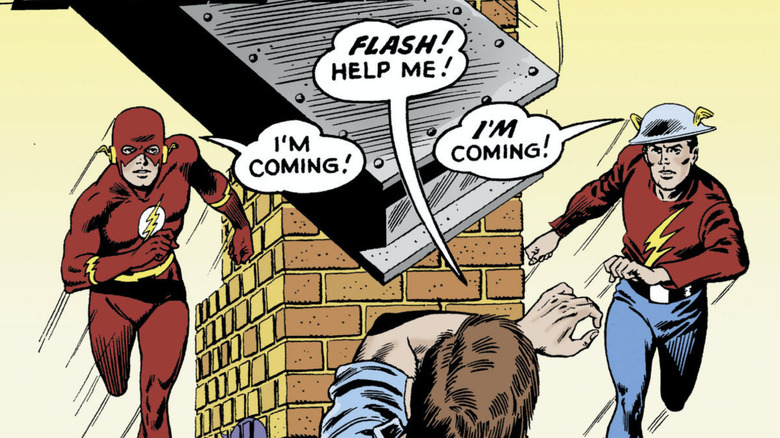James Gunn Lays Out DC Studios' Priorities For The Future Of The DC Universe
Marvel Comics and their Distinguished Competition have a long history of sharing talent, and James Gunn is the first filmmaker to bridge that gap like artists and writers have for decades.
With "Guardians of the Galaxy" and "The Suicide Squad," Gunn elevated B-listers from both universes to the silver screen. Now, alongside Peter Safran, he's going to be running the new DC Studios for at least the next four years. Warner Bros. Discovery has been searching for a leader like Marvel Studios' Kevin Feige, and it seems they've found two. Feige's mix of producing savvy and comics knowledge is a rare blend, but together, Gunn and Safran might be able to rival it.
Between "The Suicide Squad" and its TV spin-off "Peacemaker," DC fans have gotten a taste of the superhero stories Gunn likes to tell. Now, they're bracing for what projects will be coming down the pipeline. On November 6, 2022, Gunn took to Twitter to directly address fans and lay out his and Safran's priorities when guiding DC Studios.
Addressing the fans
No one can say DC fans aren't enthusiastic, and in the opening tweet of his thread, Gunn noted ongoing social media campaigns:
"Opened up Twitter at the end of a long, creative weekend to see the many tweets to #SaveLegendsofTomorrow & #ReleaseTheAyerCut & fan support for other DC projects over the years. The majority of these requests were enthusiastic & respectful."
Warner Bros. Discovery has been cleaning house recently, and DC is no exception. "Batgirl" was outright cancelled before release, "Young Justice" has been left in a hiatus lull, and The CW has canceled its DC live-action shows, "Legends of Tomorrow" included. As for #ReleaseTheAyerCut, that refers to the unsuccessful attempt at repeating "Zack Snyder's Justice League" and getting David Ayer's version of "Suicide Squad" released.
Gunn's tweet acknowledges these fan campaigns without explicitly supporting them — a perfect public relations move. It should be noted that these parts of the DC fandom don't necessarily overlap; Gunn makes it clear he's speaking to all fans, not just one segment of them. By making this overture, Gunn prepares fans for his plea, to support what comes next.
DC Studios' priorities
Over the next three tweets, Gunn lays out that he and Safran will be open-minded to fans' wishes, but are focused foremost on telling the story they're planning now:
"As the new (& first ever) CEOs of DC Studios, Peter & I think it's important we acknowledge you, the fans, & let you know we hear your different desires for the pathways forward for DC. Although our ability to interact on Twitter has been lessened due to the workload of our new positions, we are listening & open to everything as we embark on this journey, & will continue to do so for the next few years. But all our initial focus is on the story going forward, hammering out the new DCU, & telling the Biggest Story Ever Told across multiple films, television shows, & animated projects."
In other words, fans should be looking forward, not backwards. As for the plans themselves, Gunn's inklings are vague but ambitious. It seems that DC Studios won't be limiting itself to films, but branching into TV and animation. The Marvel Cinematic Universe has used Disney+ for the latter sorts of projects, and with HBO Max under the Warner Bros. Discovery umbrella, DC Studios could do the same. "The Biggest Story Ever Told" also implies that these projects will form a cohesive narrative. Will they all be set in the same world, though?
A multiverse worth of projects?
Gunn closed his thread with an open hand:
"We invite all of the DC fandoms from across the multiverse — and everyone else as well — into this new universe. We can't wait to reveal more."
The use of the word "multiverse" is key. The concept is a trend in Hollywood right now, even outside superhero movies. It would make sense for DC Studios to use the concept for its movies and TV shows going forward. After all, their comic source material pioneered the concept.
Since Gardner Fox and Carmine Infantino's "The Flash of Two Worlds" used "Earth-2" to reintroduce Jay Garrick, the Golden Age Flash, the multiverse has been integral to DC's world-building. Comic writer Grant Morrison, a friend of Gunn's, wrote in their superhero encyclopedia "Supergods:"
By spreading a given brand across multiple versions of a character designed to appeal to different sections of his audience, [DC Comics Editor Julius Schwartz] had invented a trick that would be adopted as the industry standard. Schwartz was a world builder, and, under his guidance, the DC universe became part of a "multiverse," in which an infinite number of alternate Earths occupied the same space as our own, each vibrating out of phase with the others so that they could never meet. The idea of infinite worlds, each with its own history and its own superheroes, was intoxicating and gave DC an even more expansive canvas.
Whether Gunn and Safran are planning a deeply interconnected multiverse, a streamlined saga, or a loosely-bound collection of standalone stories, fans should be reassured that the characters of DC seem to be in caring and capable hands.



